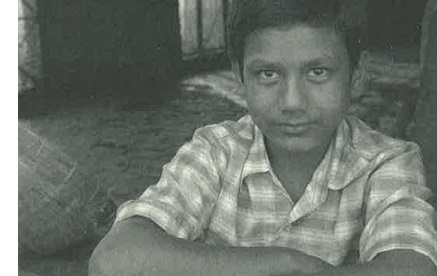November 22, 2015 Cazzie Reyes Story
Restavek Freedom in Haiti - Rose
“In 2010, you know the earthquake [happened]. And my mom was dead."
More than 300,000 children are estimated to be trapped in India’s carpet industry. Most of India’s carpets are woven in Uttar Pradesh, where the majority of workers are low-caste Hindu boys. Ravi Shanker Kumar was one of them. His parents were succumbed to agree to receive a sum of money in exchange for Kumar to work at the loom. There, he worked for no pay, for twelve to fifteen hours a day, seven days a week. He was beaten, tortured and kept in half-fed and half-clad. Kumar and other lucky child slaves were liberated in 2004 and 2005 by activists from Bal Vikas Ashram (BVA).
“My name is Ravi Shanker Kumar. I think I am between 12 and 13 years old. My cousin was working in the loom and it was he, in fact, who told my uncle to go back to the village and talk to my parents so they could send me there. My parents came up to me and asked me if I wanted to go. I refused. The loom owner refused to take no for an answer, however. He paid them a sum of 500 rupees [$10] and then, they asked me to leave. Once he had paid the 500, the loom owner and I took off from the village.

The very first day I was made to sit at a loom. The loom owner made a little mark on the loom and gave me clear instructions to weave a carpet up to that mark itself. If I was unable to do so, I had to work under candlelight to reach that particular mark. Because I was made to work late night hours, I would never be able to sleep adequately in the night. The whole morning I would be weaving and I would only get some basic and half-cooked food at about 12:30 p.m. every day. I had to force myself to eat it.
In fact, things were so bad that once in a while, while I was working in the loom, my fingers would get cut and they would get nipped. Each time I got cut on my finger, I would go up to my boss’ wife and say, "Look, I’ve got a wound on my finger. Can you give me some medicine, some ointment you can give to me?" The boss’ wife would not put any ointment for my wound. In fact, she would take a little bit of kerosene and put it in my wound and strike a match to it. That would hurt terribly. The wound would not heal, and we were made to go back and resume weaving again. Very often, because the wound was in raw condition, the blood would start oozing out of my finger. But we could not stop. With the blood running down my finger I was made to weave. Only when it became so bad that I could not possibly weave anymore, would I stop. And the moment I did stop, I was beaten up. There were two ways the loom owner would beat me up. With the stick of the loom, he would lift it up and beat me up with it. Or, there was a sharp instrument called a punja. He would use the wooden portion of that and beat me with it.
We were confined in one room and made to work for a period of 12 hours. Once in a day we could go and maybe use the bathroom, but the bathroom stops were limited in number. My father came to visit me once, he asked the loom owner to release me, but he refused: “until such time as the carpet is completed, I can’t let him leave because he’s the only one who knows the pattern.” My father went away. That was it. That was the only time I spoke to my father.
I would think to myself, "There has to be something better." I would think of running away. But the thought of running away would always be followed with the fear of getting caught. If I did get caught I would be beaten up mercilessly. Therefore I never ran away. I was rescued in a raid operation conducted by Dajna Kurooji, a person who works in the Bal Vikas Ashram (BVA). He came in a raid and picked me up from there and took me to the ashram. I was very scared during the raid. I thought I was going to get beaten up again and get thrown away. I was terrified. The loom owner used to tell us, “If and when the police come, run, run away because they are going to be mean to you.” The police official was smart enough to park the vehicle about three kilometers away from the loom and made his way in slowly. We were surprised because the crept up on us slowly. The kids were working on the loom. We didn’t have an option to run away.
The first day I came to the ashram, the other kids showed me around the place, where the bathing area was, where the bathroom was. I was fed a good meal and I went to sleep.”
Kumar was taken and given medical care at Bal Vikas Ashram. He was given counseling, literacy training and basic rights education. There, he discovered his love for electricity, which he is learning a little bit about at BVA. He wishes to teach his brothers and sisters when he goes back home.
Bales, Kevin, and Zoe Trodd. "Child Slavery." To Plead Our Own Cause: Personal Stories by Today's Slaves. Ithaca: Cornell UP, 2008. 74-77. Print.
During late summer, the harvest of garden herbs is at its peak. Why not try using fair trade, or small garden grown, herbs and spices?
Talk to children about online safety and methods that traffickers use to lure kids